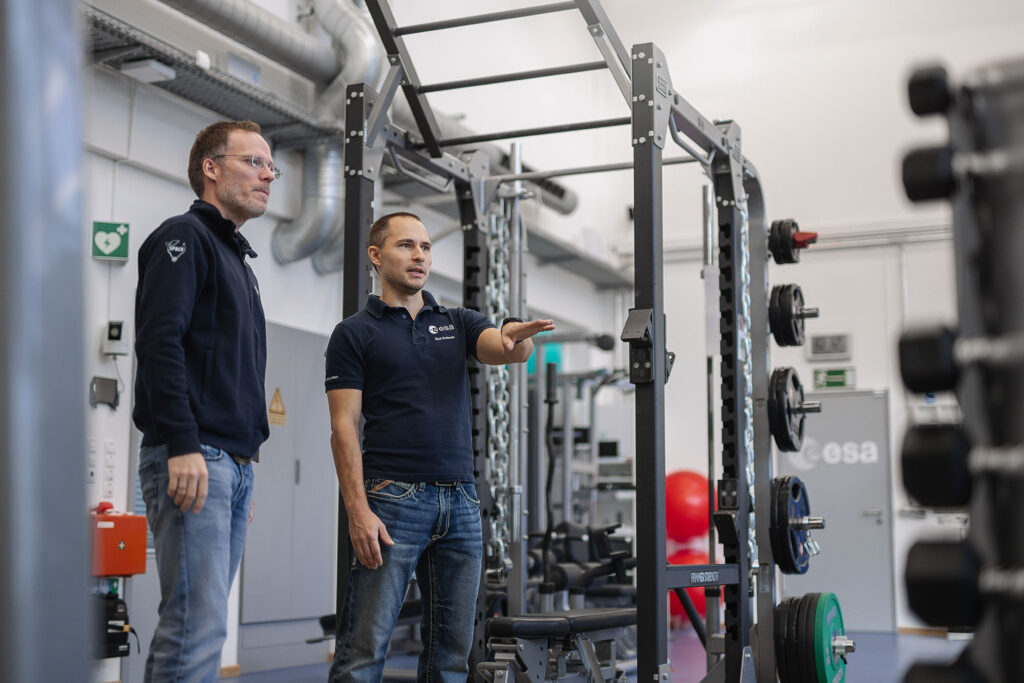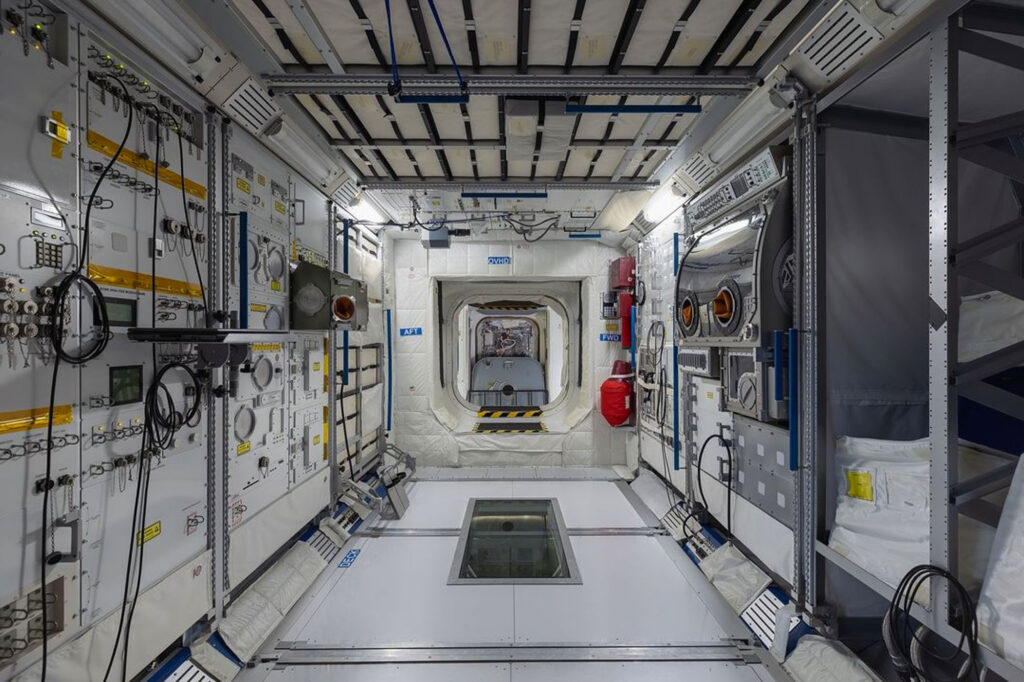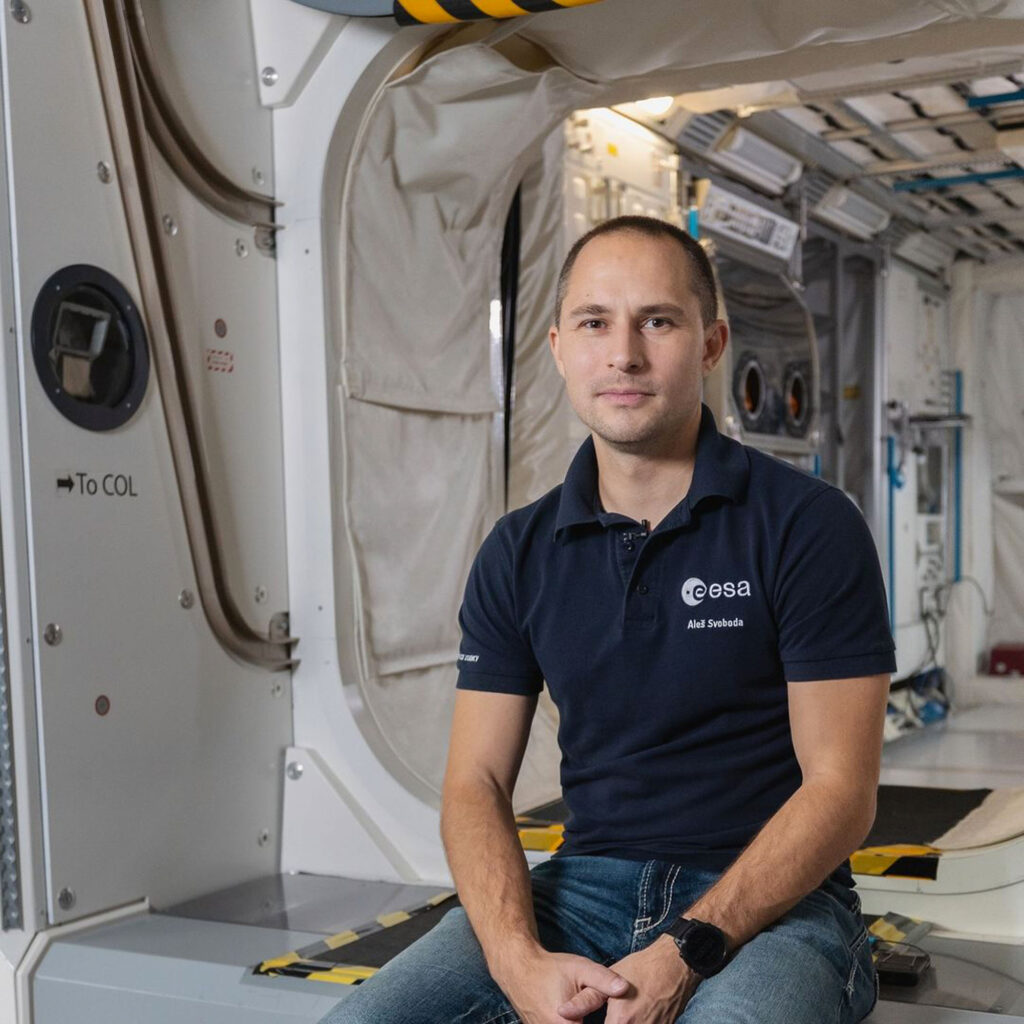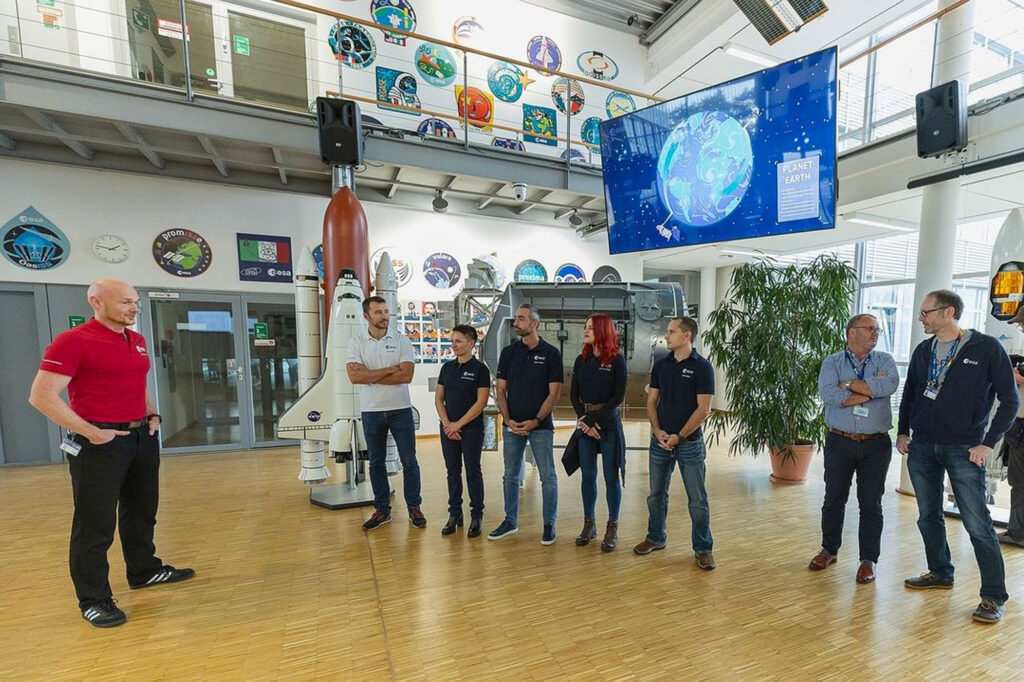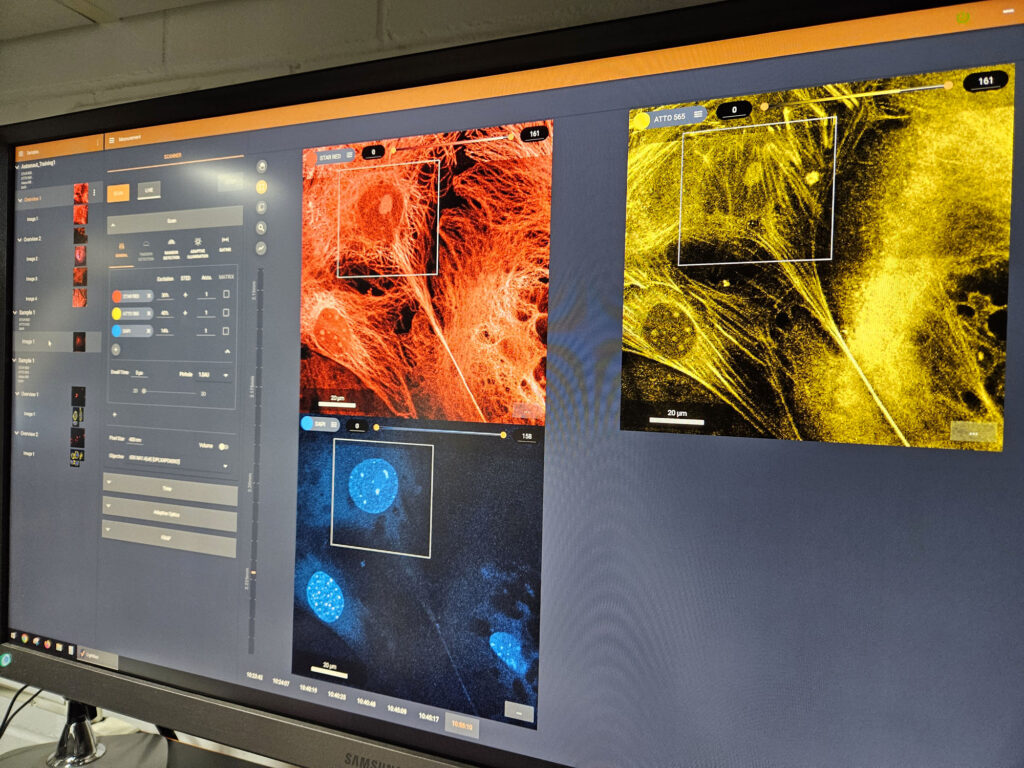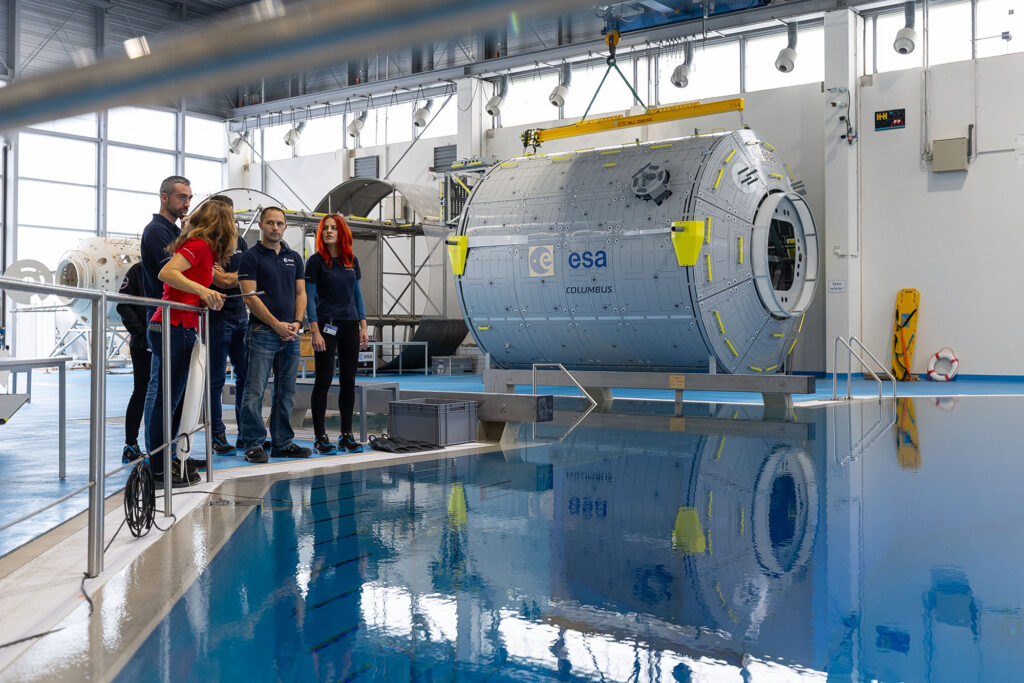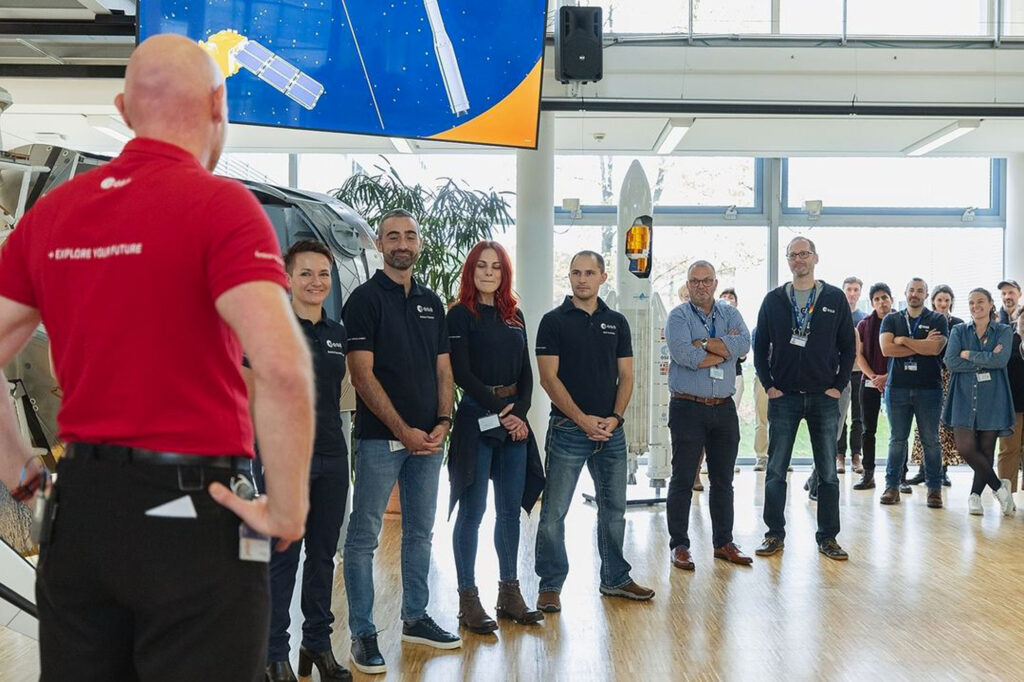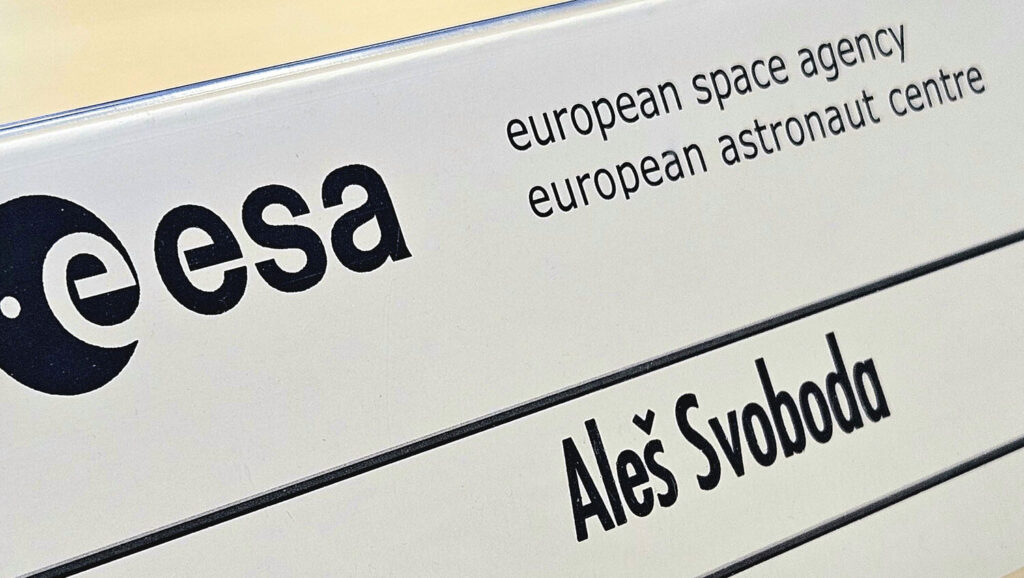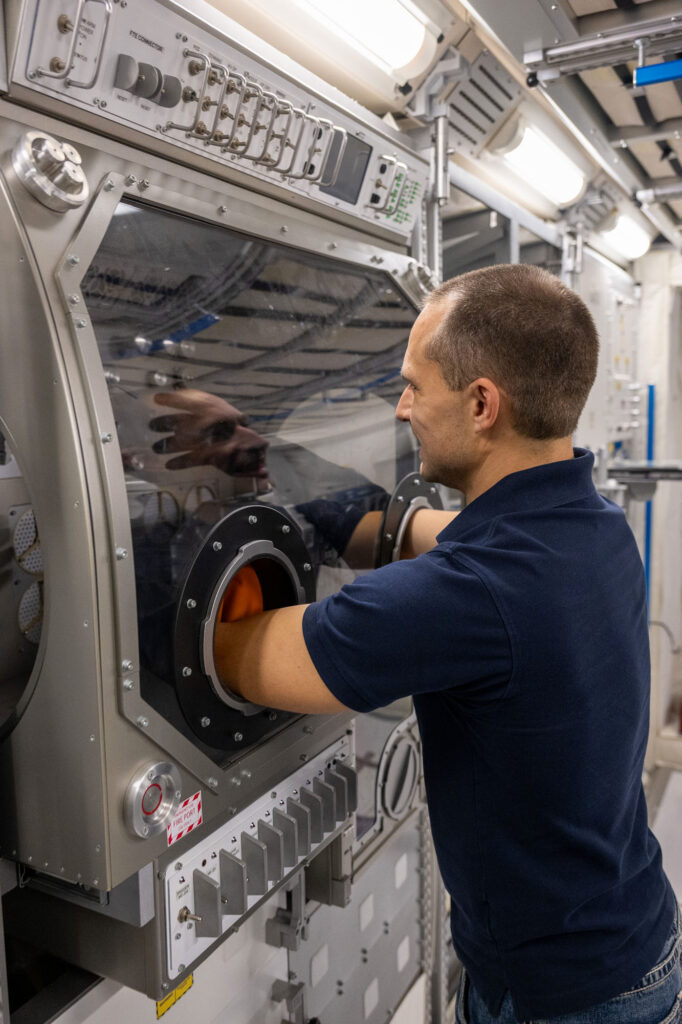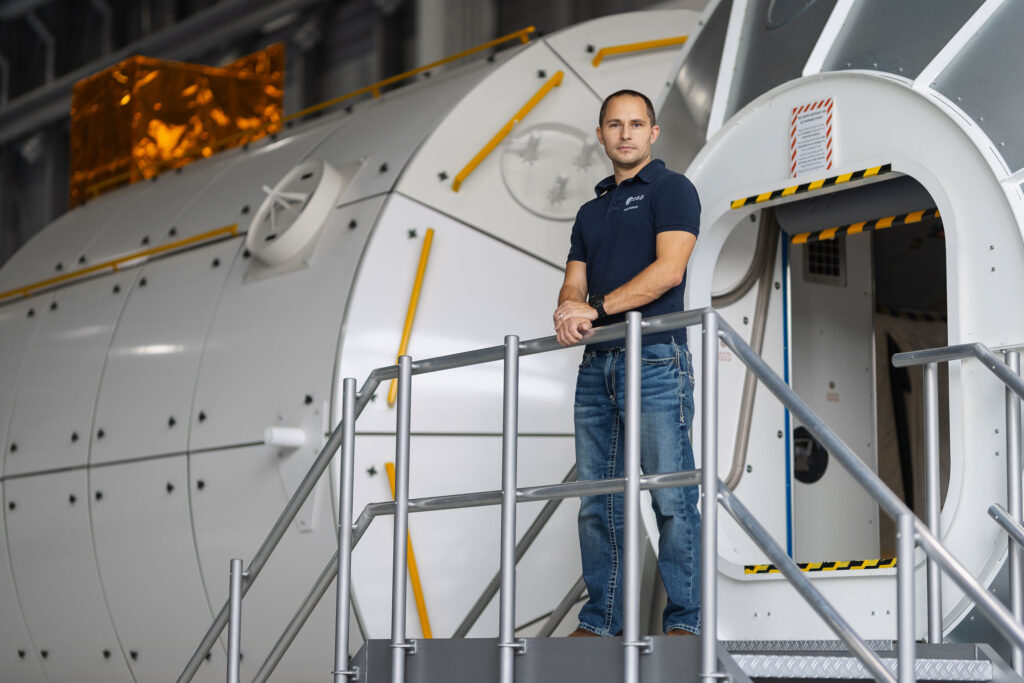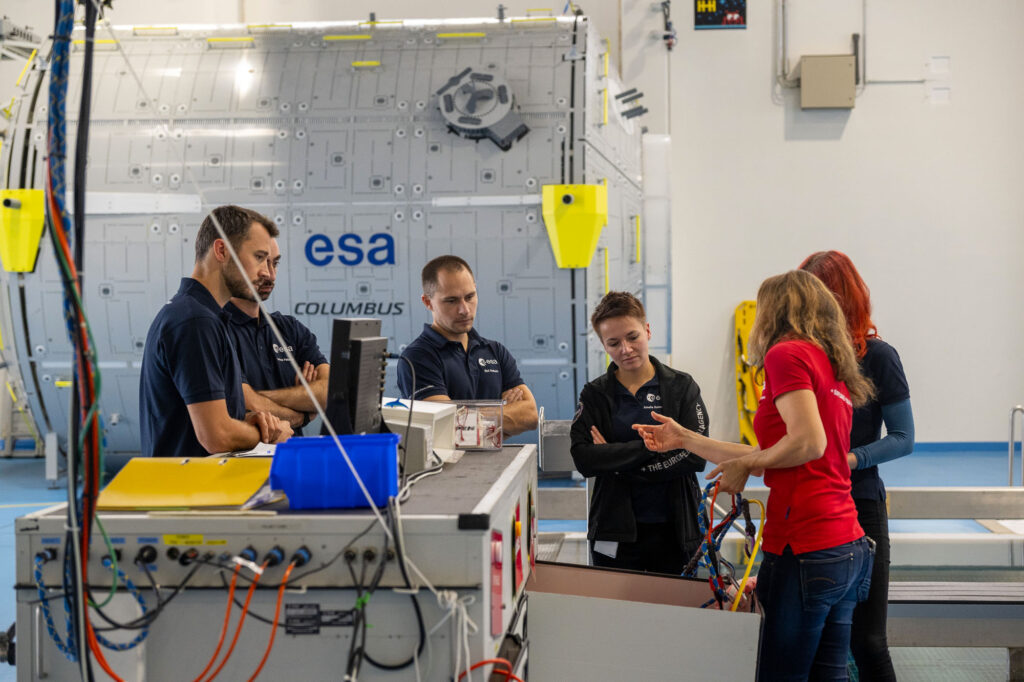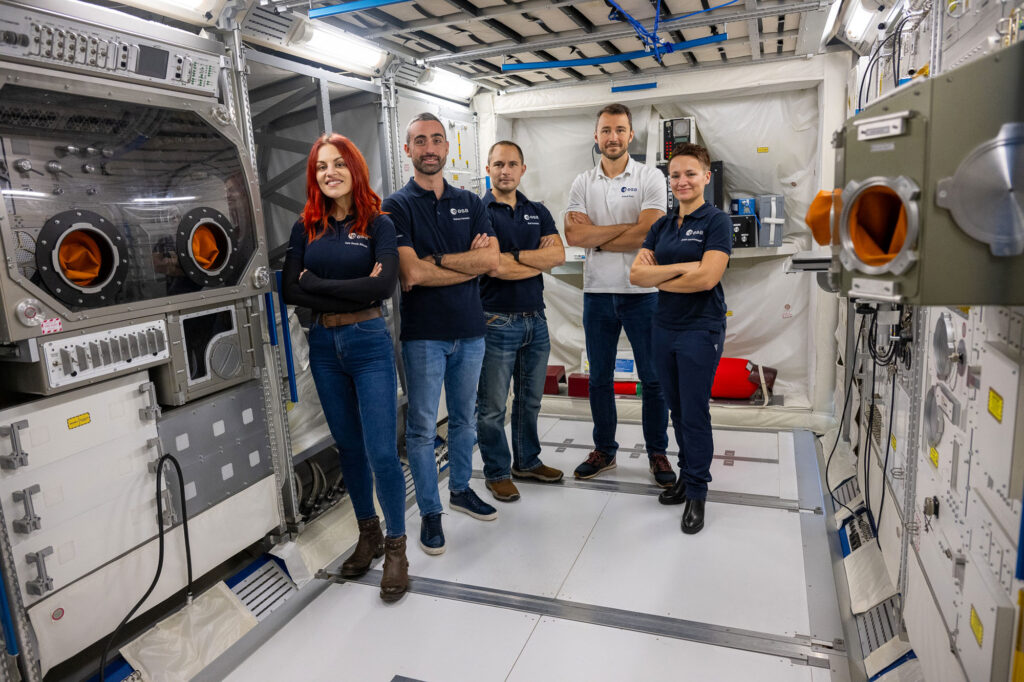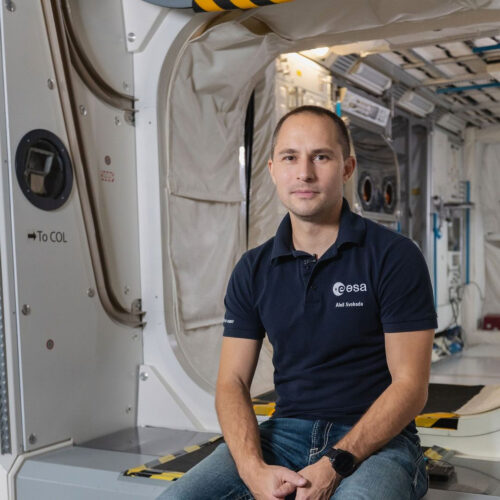
Astronaut diary. Week 1 – Training begins
We would like to share with you the diary of our astronaut Ales Svoboda.
“This spring, five ESA Career Astronauts completed their one-year basic training, making room for Astronaut Reserve training, which includes myself and my colleagues. This training covers selected parts of the Basic Astronaut Training (about 60% of the whole basic training), lasts about six months and is divided into three two-month cycles. The first training block started symbolically on 28 October, and I am participating along with my colleagues Amelie, Sara, Andrea and Arnaud. The second group will start training at the beginning of next year. Our goal is to acquire the necessary knowledge and skills to be best prepared for a possible short-term mission to the ISS.
Monday 28 October
The first day was marked by the annual medical check-up, a welcome at the European Astronautical Centre (EAC) and the official start of training. There were also introductory briefings and PR events.
The health check-up took place, as last year, at the DLR Flight Clinic, located near the EAC. ESA and DLR (German Aerospace Centre) share a campus with different facilities and buildings. Some of them belong to ESA, others to DLR and some are shared. A small part of the DLR Flight Clinic belongs to the German Luftwaffe. The clinic provides medical examinations not only for ESA astronauts but also for Luftwaffe pilots, civilian pilots and air traffic controllers.
Before visiting the Flight Clinic, we stopped briefly at the EAC for a photo shoot for the passes – a matter of about 5 minutes, the passes were ready in the morning.
Then came the tour itself, which today was attended only by me and my Spanish colleague Sara. The others had scheduled it for the end of the previous week. At the Flight Clinic, the Flight Surgeon was already waiting for us and was in charge of the whole process. Everything was done in a very friendly atmosphere, with no queues and almost no other patients (I met about two or three during the whole morning). Everyone was ready for us, and the various checks were scheduled according to a simple schedule. Because health checks have become routine for me over the past nearly twenty years, I felt no particular nervousness.
It started with the collection of biological samples (blood, urine), followed by tympanometry and a cursory clinical examination (consultation, measurement, weighing, pressure, listening, neurological check). Then it was on to the eye examination – this was split into two relatively longer parts. The first included a visual field examination, several different visual acuity tests (with and without correction, each eye separately and both eyes), colourvocity, refractive error measurements, depth perception and a whole host of other tests that I don’t even know what they were for. Before the second part, there was audiometry – a familiar thing to me and other pilots. You sit in a soundproof booth, with headphones on your head, and a lady playing barely audible tones of different frequencies into them. Your job is to press a button every time you hear a tone.
The second part of the eye examination followed – eye dilatation, retinal examination, refractometry, intraocular pressure measurement and several other checks. At the end there was a bicycle stress test. I was glad to get at least some exercise that day thanks to this. First the ECG and resting blood pressure were taken, then it was on to the bike – again resting measurements, a few minutes to warm up, and then increasing the wattage every minute. While pedalling, the cardiovascular system response to the load and O2 and CO2 exchange is measured (that’s why we have a special breathing mask with a sensor on). At the end the papers are written up and everything is done. The nice thing is that then one also gets a short report if everything is OK or if there is some risk somewhere and possible recommendations what one should do as a precaution.
The tour was followed by a short drive back to the EAC, where I met Alex Gerst. Not only were we both happy to see each other again after almost a year, but he even gave me a short tour of the Astronaut Office. He showed me where my office is here together with Amelie. During training, we share the offices of astronauts who are here permanently but are just leaving for training in the US. So Amelie and I are in the office that normally belongs to Sophie Adenot and Pablo Alvarez Fernandez. Next to us are our colleagues from France and Italy, Andreas Mogensen and Thomas Pesquet have an office opposite, and of course everyone else on the rest of the floor. A few years ago, I would never have imagined that I would have my own name badge in the ESA Astronaut Office and share the same floor with ESA astronauts who I knew then only from their own books…
The afternoon programme was focused on a not very interesting but obligatory briefing on occupational safety, then on getting acquainted with the team around the ESA Astronaut Office, the Crew Support Team and other people who are responsible for supporting the astronauts during training, preparation for the flight, during and after the flight. This was followed by another briefing, this time about the PR team. Meanwhile, there was an official welcome in the EAC lounge and a fitting for the jumpsuits (it’s quite nice that they are customized). The end of the day was dedicated to a short but relaxed social event with the rest of the EAC staff. After that, it was back to the airport to the rental car place. I was lucky – the booked category of car was sold out, so they had to give me a bigger and brand new car – well, what can you do… Luckily it’s in the machine. So I arrived “home” at about 8 pm.
Tuesday 29 October
The second day started with getting out the iPads (one can never have enough electronic devices, apparently) and a tour of the local EAC gym, including the necessary safety briefing. The gym is relatively small, but well equipped. A cardio zone with ergometric bikes, a stepper, several treadmills including an “anti-gravity” treadmill for recovery, dumbbells, weight machines and lots of other equipment. On top of all this, professional trainers who are at the disposal of us and other colleagues in the EAC. I’m glad we have such service and facilities here…
Afterwards, the “EAC Space Training Team” was introduced and basic information about the training of ESA astronauts was given.
Over lunch (or rather instead of lunch) I had an online interview for Czech Television – for the evening news and then a longer version for the morning Studio 6 (I recommend watching it – link here). After the interview, I had a photo shoot for the Czech PR team, who were there for the first two days taking photos and filming some parts of the training. At least I don’t have to worry about getting fat here.
The afternoon began with a briefing on the Neutral Buoyancy Facility (NBF), which is a special 10-meter deep pool designed for training procedures that are then used during ascents into free space (EVAs or spacewalks). The briefing continued with information on scuba training, the mandatory Swim Test, and the mutual recognition of certifications between the NBF at the EAC and the Neutral Buoyancy Lab (NBL) in Houston (which is kind of a bigger version of the NBF). Testing of wetsuits for diving continued. The first one fit me right away, so it was quickly done. The day ended with the aforementioned Swim Test, which is based on the NBL requirements in Houston. That is, swimming 250 meters or 800 feet for time (we all met it by a very decent margin), swimming 15 meters underwater, and treading water for 10 minutes. We all found the water treading to be a rather odd event – some of us, like myself, were doing it for the first time. After we had all successfully completed the tests, a photo session with the local PR team followed. For me, there was another photo and film session with the Czech PR crew, which meant another 40 minutes or so in the pool.
Wednesday 30 October
The third day was entirely devoted to biology. Altogether about 7 and a half hours of lectures. At the beginning there was an introduction to biology. More precisely, a lecture about macromolecules, cells, genome sequencing, the effect of radiation on DNA, but also about 3D printing of organs or about instruments and technologies for research on the ISS.
This was followed by a lecture on gravitational biology, i.e. the effect of altered gravity (for example on the ISS, on the Moon or on Mars) on organisms – plants, animals and humans. For example, the impact on plant growth, the movement of microorganisms, the degradation of muscles and bones, or the reduction of the immune response. I found it interesting to learn about the various methods of inducing alternative gravitational conditions, i.e. parabolic flights, “sounding rockets”, drop towers and other devices designed primarily for research.
The day ended with a lecture on radiation physics, i.e. cosmic radiation in the form of Solar Particle Events, intergalactic radiation and radiation trapped in the Van Allen Belts. It’s a subject I’m somewhat familiar with, so I was quite entertained by it as well. There was mention of the 1972 solar event between the Apollo 16 and 17 missions, the South Atlantic Anomaly, and protecting the ISS crew from cosmic radiation. An interesting part was devoted to radiation measurements, where the Czech Republic has a representative with its cutting-edge technologies. I was very interested, for example, in the measurement of radiation doses in transport aircraft, on the ISS, on the Moon and on Mars, as well as in the experiments in radiation physics and the measurement of human impact carried out on the ISS. Of course, there was also an introduction to the very useful applications of research here on Earth – in particular the application of technologies developed in space research for radiotherapy in medicine.
Thursday 31 October
The fourth day belonged again mostly to biology. We started with a practical exercise in the DLR laboratories focusing on laboratory procedures and microscopy. I have to say that pipetting in rubber gloves into sterile test tubes always seemed like a terrible bore to me and this time was no different. But it was cool to get a detailed look at the Flumias fluorescence microscope that will be flying to the ISS, and we all got to try out a training replica of it and then sign our names on it. Not only the Flumias, but the laser microscope produces really beautiful images of cells, where you can see the different parts of the cells beautifully and can even view them in 3D. After lunch there was a short briefing about the EAC Space Medicine Office, then time dedicated to PR activities and finally a very interesting lecture on radiation biology. We learned important information not only about radiation doses in different types of spaceflight and countermeasures, but also about which technologies developed for the space program are now serving as effective tools for cancer treatment on Earth.
Friday 1 November
The last day of the first week was the ESA Holiday. ESA, as a multinational institution, has its own holidays. And one of ESA’s holidays falls on 1 November. Coincidentally, this day is also a public holiday in Germany, preceded the night before by the annual Halloween.
